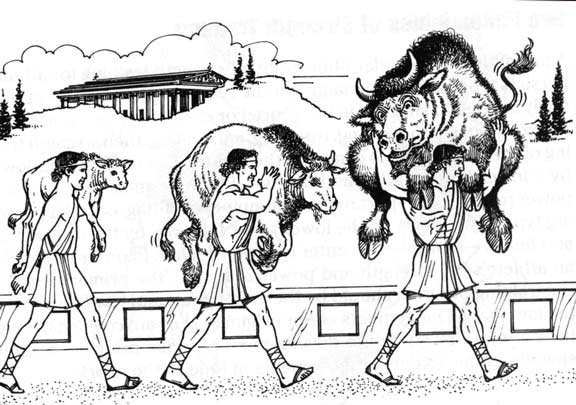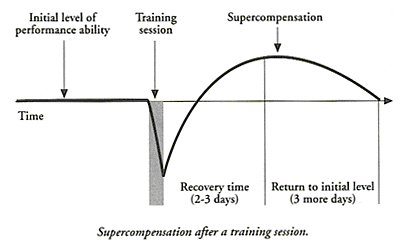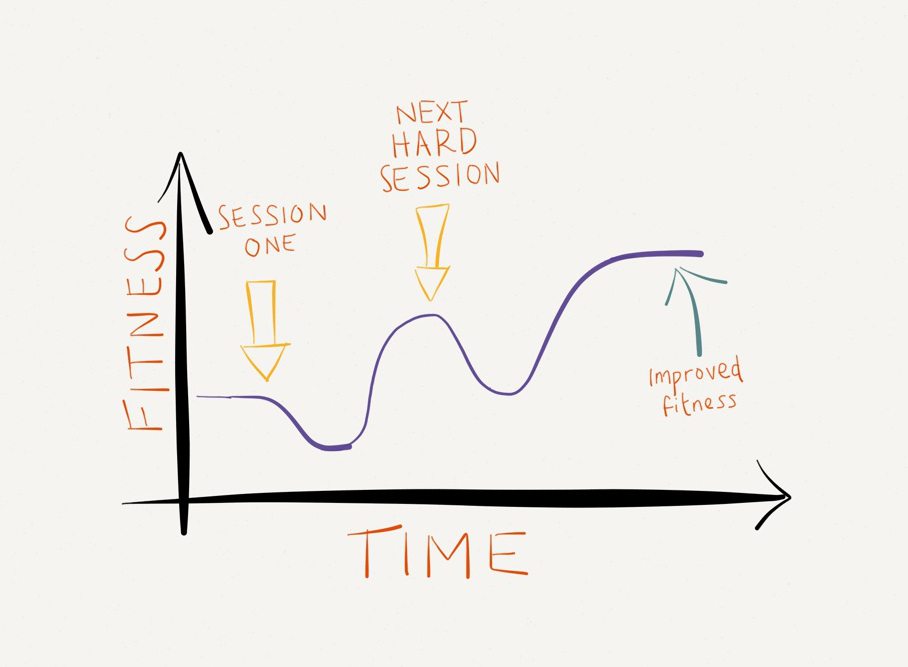Progressive Overload: The Key to Gaining Strength and Muscle Mass
Ever seen that guy at the gym who has gone for years but looks pretty much the same as day one? Maybe it’s you. I know I’ve seen it. Guys that go to the gym three or more times a week every week, who do the same old tired routine over and over again and who never make any strides in the amount their lifting or their muscle mass. Most of them eventually burn out taking on mantras like; “weightlifting only works if you take steroids” or “my genetics don’t let me get big” or “I plateaued (while bench pressing 185 pounds).”
That’s a bunch of bull crap.
The problem with these guys isn’t genetics or a plateau. It’s that they don’t understand the most important, yet often overlooked, principle of resistance exercise. In fact, if you forgot everything else about lifting and only stuck to this one principle I would guarantee that you would see results in both strength and muscle mass.
So, what is this magical principle of weight lifting?
Milo of Croton and the Bull

According to the Greek mythology, it was Milo of Croton, a wrestler from the Magna Graecian city of Croton who discovered the importance of lifting progressively heavier weights.
Growing up in Greece, Milo had always admired the wrestlers training in Croton. They possessed unbelievable strength and chiseled bodies. Milo’s admiration for such men drove him to become just like them.
In achieving his dream Milo ‘discovered’ progressive overload weight training. The legend is that one day, Milo stumbled upon a newborn calf near his home. Milo hoisted the calf onto his shoulders and carried the small animal on his shoulders. The next day, Milo did the same thing. And the next day €¦.and the next.
Each day the calf grew bigger and each day Milo of Croton carried more weight. After four years of carrying the calf to and fro, Milo was capable of lifting a heavy bull on his shoulders with ease.
The Principle of Progressive Overload
Progressive Overload is so simple and straightforward that I shouldn’t have to write about it at all, but so many people get it wrong that I feel I must. The principle of Progressive Overload is as follows: In order to increase one’s muscle mass, strength or endurance one must progressively increase the amount of stress placed upon the body over time. It’s that simple.
- If you want to get stronger, you have to lift heavier weights over time
- If you want to get bigger, you have to lift more volume over time
- If you want to get faster on the bike, you have to go faster while training over time
- If you want to go farther while running, you have to go farther while training over time
It’s a simple concept, but it is one that so many people fail to incorporate in their training plans and gym routines. If you say; “I’m going to ride my bike 10 miles at 15 miles per hour three days a week” or “I’ll bench press 135 pounds for 3 sets of 8 reps twice a week” how would you ever expect to get better? If you go to the gym and do the same damn routine with the same amount of weight, reps, and sets day after day you will never improve. Ever.
The human body is highly adaptable. You give it a stressor (the stale routine you stick to) and it will adapt to it. Then it will stop adapting. Each time you lift a heavy load or go on a long bike ride the muscles undergo trauma at the cellular level. The body works to quickly repair that damage and actually super-compensates for it.

In other words, not only does the body repair the damage done to it via exercise, it also builds the muscle so the next time you lift that heavy load it doesn’t cause damage at all. The body’s adaptive process is ready to help you get stronger, but if you just keep giving it the same amount of stress it won’t.

Is it clear now? You must lift heavier and heavier loads over time to progress. You must always be improving beyond what you did during the last training session. One more rep, another set, more weight, more distance, the same distance in less time. You must push your body to progress because the greater physiological demand you put on your body the more it will adapt and grow.
The process of Progressive Overload requires tracking, this is why I encourage everyone to keep a journal or use an app to track their training. My favorite choice is Strong for iOS because it’s easy to use and has a no B.S. interface. Tracking is essential to seeing progress over time, are you truly getting bigger, stronger, and faster? Careful, though, progress doesn’t come overnight and it isn’t always linear. If you could add 5 pounds to every lift every week you’d be a world-class powerlifter in a year or two. Eventually, progress will slow. That’s normal.
Progress will come, don’t you worry. By deloading when necessary and working through your plateaus by using Progressive Overload you can ensure that you are always getting stronger or adding muscle mass. If you become apathetic and got to the gym to do the same thing every day, you will gain nothing.






